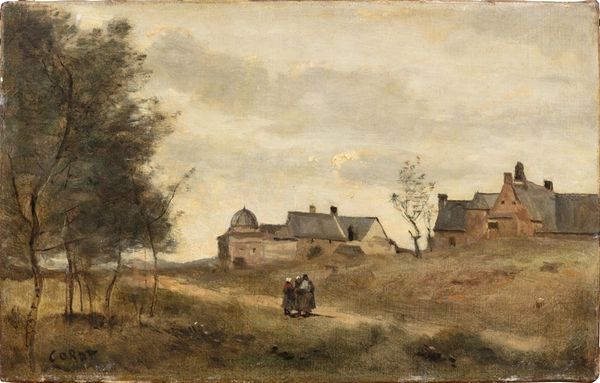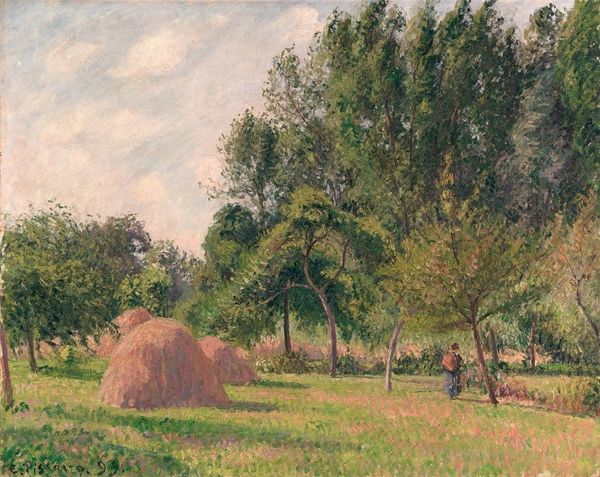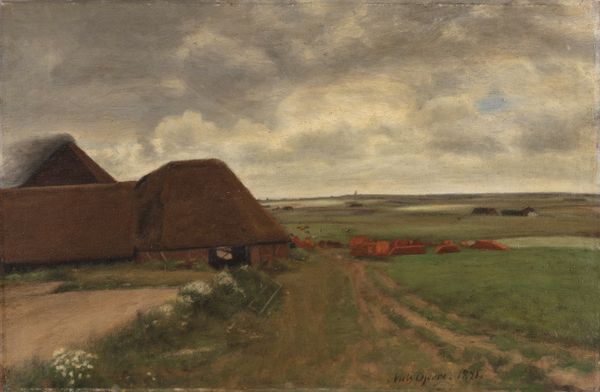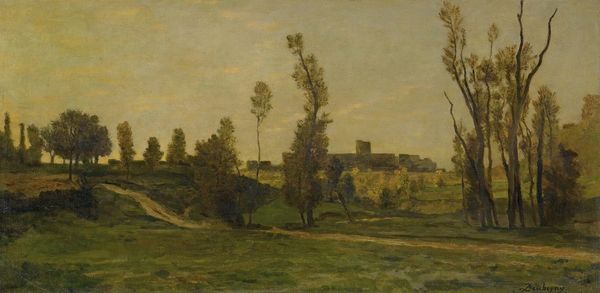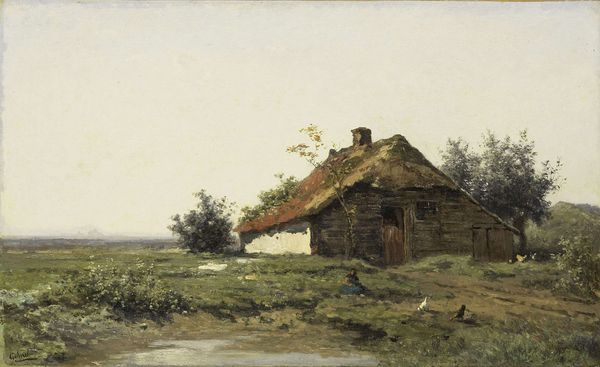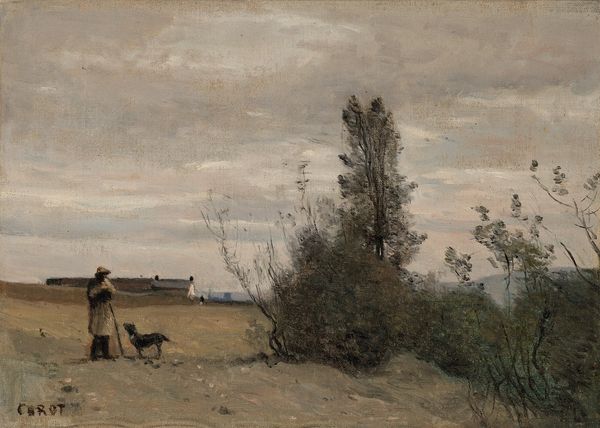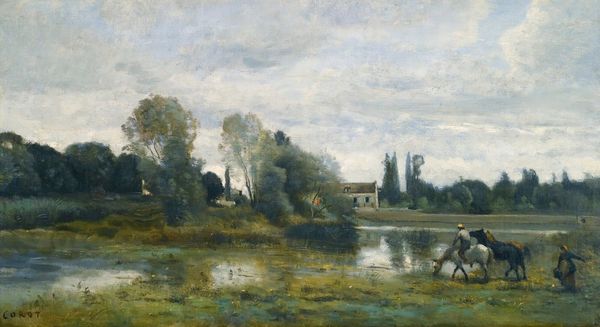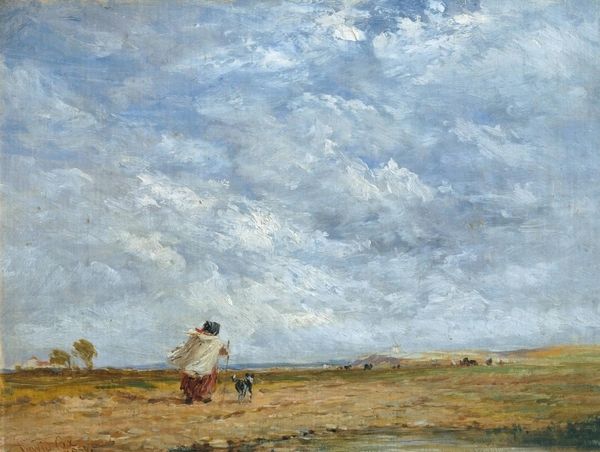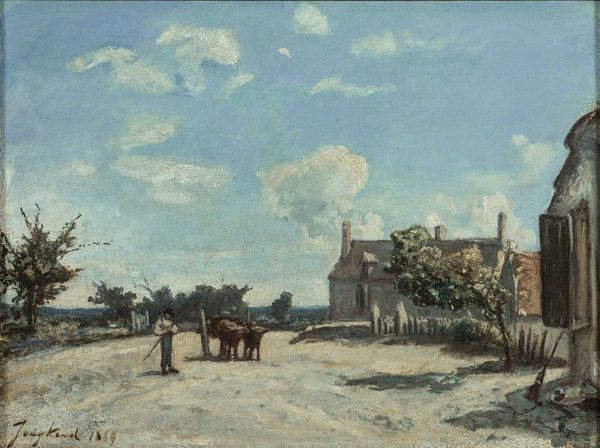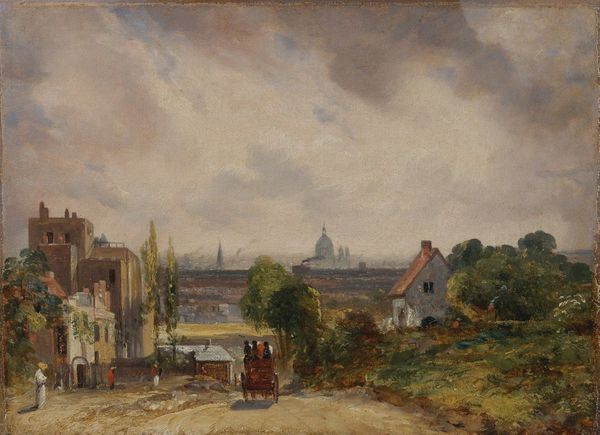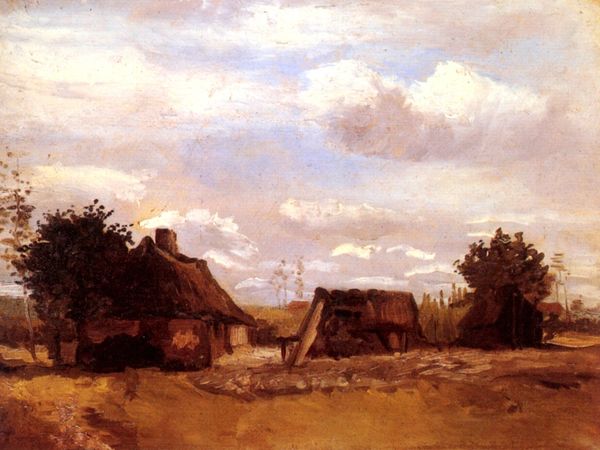
drawing, plein-air, paper, watercolor
#
drawing
#
impressionism
#
plein-air
#
landscape
#
paper
#
nature
#
oil painting
#
watercolor
#
underpainting
Dimensions: sheet: 39.37 × 51.44 cm (15 1/2 × 20 1/4 in.)
Copyright: National Gallery of Art: CC0 1.0
Curator: Looking at Jean-Charles Cazin’s, “Storm at Arbonne,” created in 1878, I’m immediately struck by how still it feels, despite its title. It’s muted. I can almost smell the damp earth and hear the quiet before the storm. Editor: It’s interesting you say that, because I find a certain tension within the stillness. I read it less as quiet anticipation and more as a depiction of labor under duress, shadowed by nature’s volatile potential. Curator: Tell me more. Editor: Consider the historical context. This piece was created during a time of immense social upheaval in France, particularly amongst rural populations who struggled with displacement due to rapid industrialization and socio-political tensions following the Franco-Prussian War. This is perhaps less a straightforward landscape study and more an artistic engagement with precarity and resilience. Curator: You're right; that lens is insightful. I hadn’t considered that the figures at the haystack might signify not just rustic life, but an element of struggle tied to broader social conditions. Cazin uses watercolor, oil, and pastel here. Notice how the sky dominates the composition, dwarfing the village. It creates a sense of impending weight and hints at the uncertainty and exposure inherent in agrarian life during that period. Editor: Absolutely. And while he embraces Impressionistic techniques with his application, breaking with Academic traditions of idealized landscapes, he is showing us something about land use and human intervention. It's a commentary on a people reliant on the land, yet threatened by elements beyond their control. How are we meant to see that interplay? Curator: The artist subtly plays on power structures and dependence: people depend on nature, yet they make decisions that depend on people. The seemingly simple landscape reflects profound tension and embodies broader dialogues of that historical moment. It’s a work that continues to reveal itself, especially with insight to social struggles of that period. Editor: I completely agree; Cazin’s choice of muted tones and seemingly simple scene is rich with commentary on human and societal issues.
Comments
No comments
Be the first to comment and join the conversation on the ultimate creative platform.

